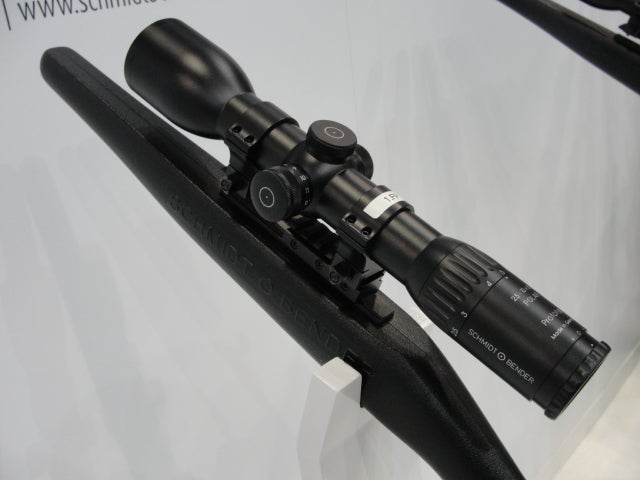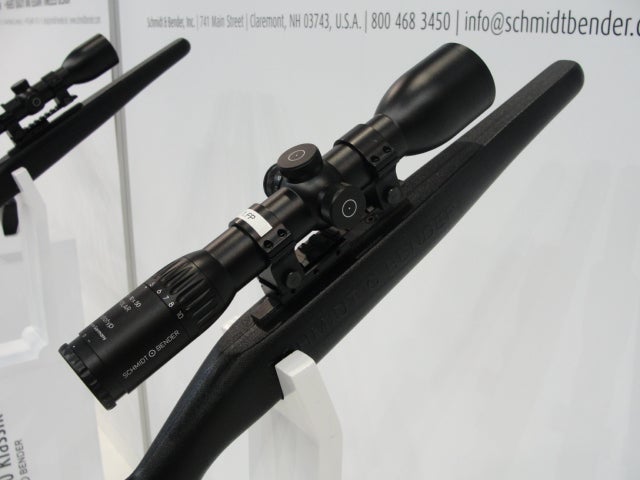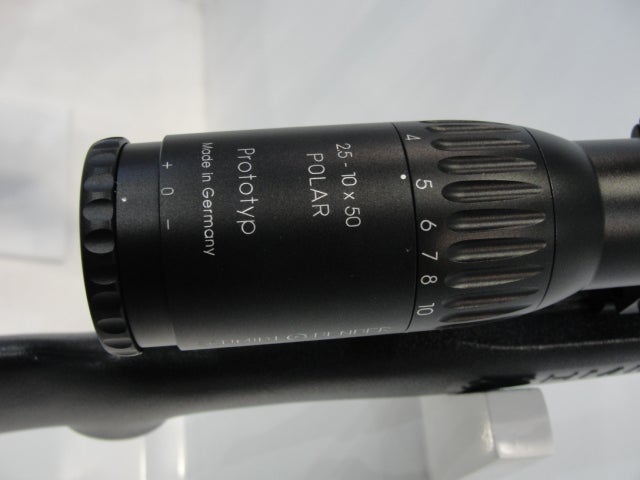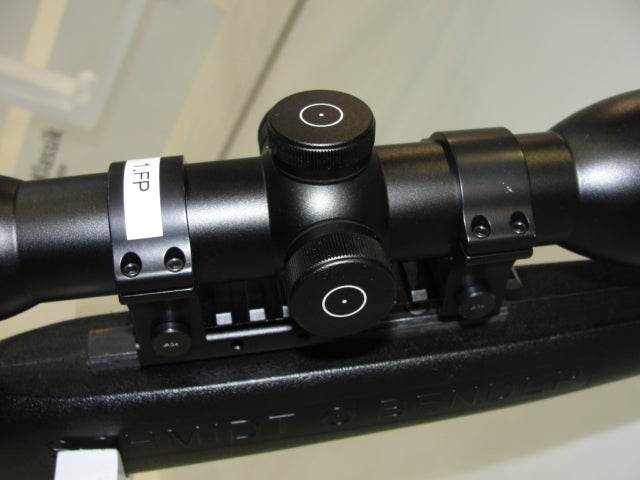This year, Schmidt & Bender has released their new Polar T96 rifle scope aimed at shooters who need to make precision shots in low-light ambient conditions. I was happy to be assigned to visit the Schmidt & Bender booth on the SHOT Show floor. The Polar T96 has a variable 2.5-10x power magnification with a 50mm objective lens for added light intake. Despite being marketed for hunters, this would make a great military or law enforcement rifle as well.
Looking through the Polar T96 I found an incredible picture of clarity, as to be expected. I found eye relief to be easy to locate, and I detected no glare or optical distortions. I wish there had been a true low light area to test the Polar T96 claims, but from room light conditions this scope makes a statement.
Light Transmission
Schmidt & Bender is making bold claims that the Polar T96 is “the brightest low-light hunting scope in the world”, and the “first riflescope with more than 96% total light transmission”. According to Schmidt & Bender total light emission with the Polar T96 reaches 96.37%, which is 2.47% greater transmission than a major competitor’s at peak performance. The separation reaches nearly 5% at lower wavelengths of between 400-500nm.
To accomplish this Schmidt & Bender states they have optimized the wavelength depending transmission to suit the human eye sensitivity under low light conditions. With more light coming in the target appears clearer with more detail.
First and Second Focal Plane Options
The First Focal Plane option has a very nice duplex reticle with thicker reticle lines coming in from the sides and bottom, in a very traditional German sighting system. About midway to the center point the three thicker lines turn into very fine hairlines. The reduction in reticle size is perfectly located. The larger lines are not so close to the middle to be obstructive of the target, but not so far away that they don’t naturally lead the eye to the center point. The top line is a hairline that comes in to meet the other hairlines in the middle. At the middle there is a small break in the lines, allowing a fine cross pattern to take up the center aiming point by itself. I really appreciated this version because I found the hairline cross pattern provided a superb aiming point with no unnecessary obstructions of the target.
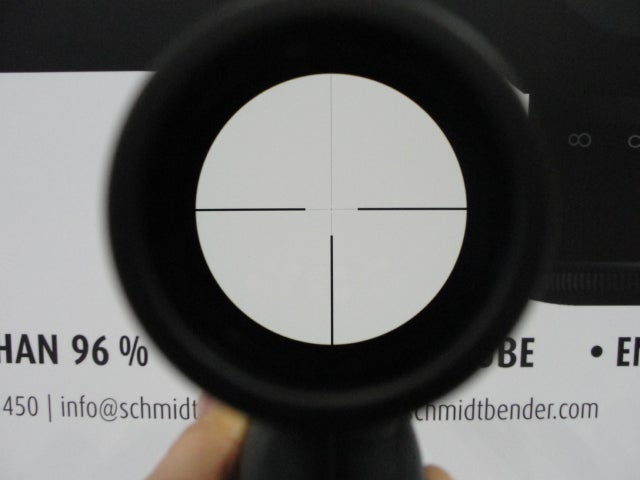
The First Focal Plane reticle comes to a cross at the center point (yeah, it’s tiny, but easy to see at proper eye relief).
The Second Focal Plane reticle has the same duplex reticle as the First Focal Plane option, with the exception of the center point. Here the hairline reticles come together in the middle and once again have a small break just prior to the center point. The Second Focal Plane reticle, however, has a dot aiming point as opposed to the cross pattern in the First Focal Plane option. Though still a small dot, I preferred the cross pattern.
Talking to a floor representative, the Schmidt & Bender Second Focal Plane reticles are superior to many other rifle scope manufacturers because they treat both lenses as opposed to only one. When using the illuminated reticle, the First Focal Plane option is not as bright making it better suited to dimmer scenarios, or with the use of night vision optics. The Second Focal Plane has a brighter illumination so would be better suited for daylight or variable light conditions.
An example of a variable light condition where the Second Focal Plane may outperform the First Focal Plane for the reasons mentioned above would be just before or at dawn, and at or just after dusk. In both situations a shooter may be looking into sight picture with a lighted sky, while the ground remains fairly dark.
Illuminated Reticle
The Polar T96 has 11 light settings for the illuminated reticle providing an incredible range of options to meet the specific needs of the shooter at that particular time and light setting. The lighting is only available in red, and is easily adjustable by a light setting knob on the left side of the scope. The knob has open numbering for easy reference, and positive tactile adjustment points.
Polar T96 specifications:
- Length – 13.22 inches
- Main Tube Diameter – 1.35 inches
- Weight – 22.93 ounces
- Magnification – 2.5-10x
- Field of View @ 100 yards – on 2.5x = 45 feet; on 10x = 11.25 feet
- Exit Pupil – on 2.5x = 0.47 inches; on 10x = 0.2 inches
- Eye Relief – 3.54 inches
- Diopter Adjustments – from -3 dpt. to +2 dpt.
- Windage and Elevation Adjustments – 131 MOA elevation, and 21 MOA horizontal range
- Adjustment controls – Optional enclosed or exposed turrets
- Reticle Illumination – 11 settings from night to day
- Focal Plane – 1st and 2nd options
- MSRP – $2400 for 1st Focal Plane, and $2500 for 2nd Focal Plane.
- Estimated Delivery to Market – End of November 2015!
Yes, that delivery date is correct. All the versions I handled on the SHOT Show floor were labelled as Prototypes, so it would appear that full production on the Polar T96 has not yet materialized. The wait should be worth it though.
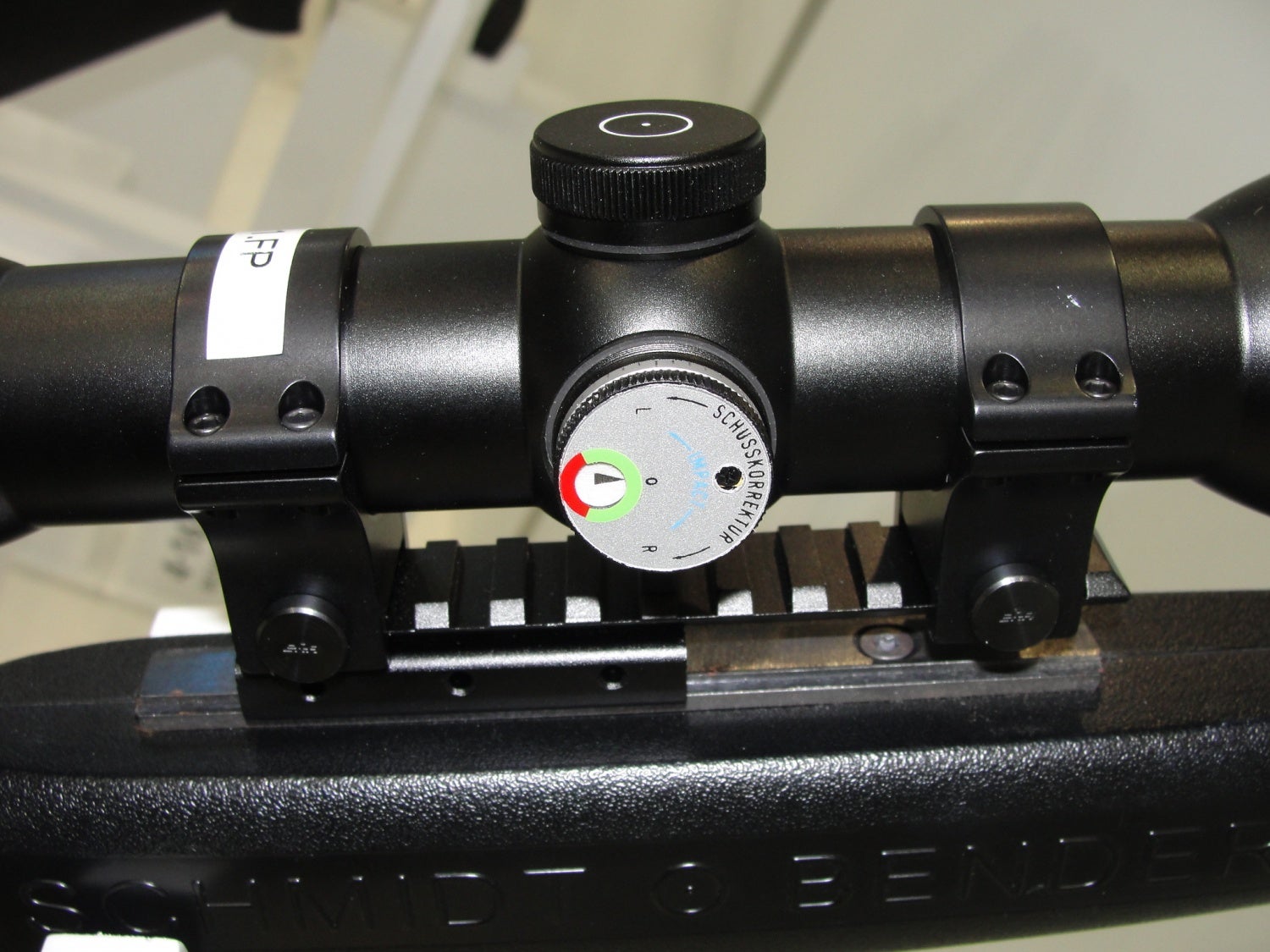
The exposed windage turret from the enclosed turret option. Adjustments are easily made by hand twisting the turret.
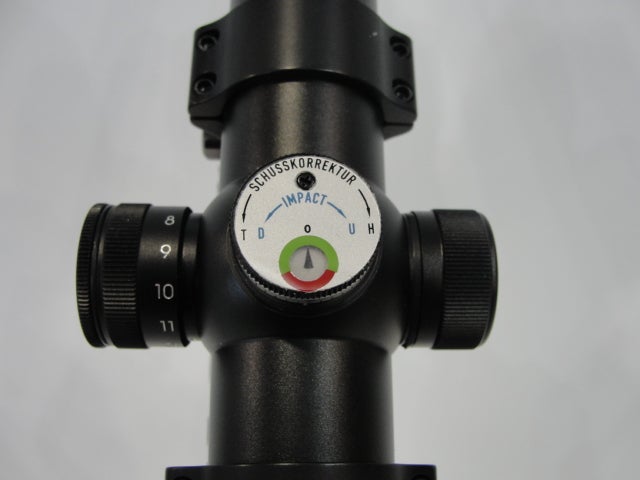
The exposed elevation turret on the enclosed turret version. Sprechen Sie Deutche? English instructions included!
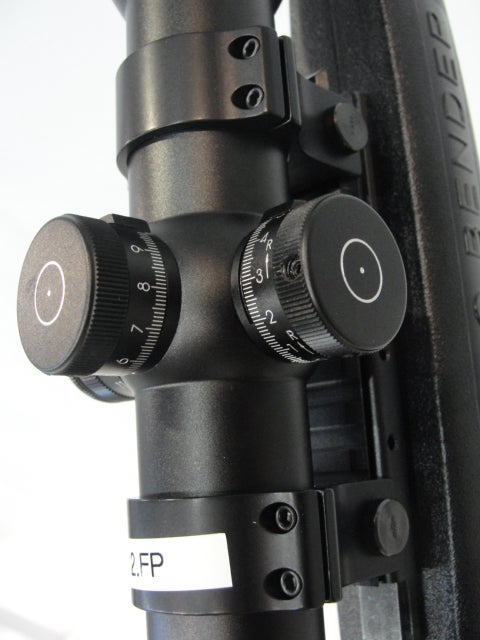
I prefer the exposed turrets for easier reference, especially for any follow-up shots at longer distances.
 Your Privacy Choices
Your Privacy Choices
